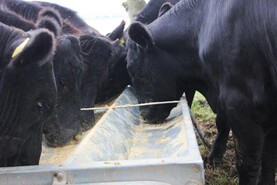A high percentage of mid-season lambing flocks have started breeding or will do so in the coming weeks.
Once breeding starts, the preference is to leave disruption to a minimum bar reapplying raddle on rams and possibly administering any vital health treatments.
Many flocks will have their purchasing done and have ewes pretty well sorted at this stage.
With cross compliance inspections ongoing, now is a good time to ensure that your paperwork is up to date and that there are no major tagging deficiencies evident.
Each year, issues such as lost tags, failure to maintain an up-to-date flock register and failure to notify the Department of farm-to-farm movements are significant causes of cross compliance penalties.
The following is a brief summary of what to expect in the case of an inspection and tips to steer clear of trouble.
Inspection process
A sheep or goat identification and registration inspection will focus on four aspects.
The first is a count of all sheep on the holding. This will be cross-referenced with the flock’s annual sheep and goat census submission and will also be used to establish if movements in or out of the flock are being recorded sufficiently.
The count also facilitates the second component of the inspection, which is an assessment of tagging.
The number of sheep missing one or two tags will be recorded. Breaching thresholds will trigger a penalty, while sheep missing two tags can also have an effect on other schemes such as the Sheep Improvement Scheme, the successor to the Sheep Welfare Scheme.
Under the terms and conditions of this scheme, sheep found to be missing two tags in the case of an inspection cannot be used in the flock reference number calculation.
The inspection of dispatch documents will assess if these are being completed adequately
The final two components are a review of dispatch documents and upkeep of the flock register.
The inspection of dispatch documents will assess if these are being completed adequately or where tag numbers are being recorded via a central point of recording, such as a factory, that these are available and numbers listed correlate to the number recorded on the dispatch document.
Movements must be recorded in the flock register and documentation must be held for at least three years.
The Department advises that the review of the flock register will assess if an up-to-date inventory of animals on the holding is being maintained, movements are recorded and the count of the annual sheep and goat census is recorded.
Replacing lost tags
The move to mandatory electronic identification for sheep leaving a holding has only two options to address lost tags.
Where an animal is missing a tag, then a new tag with the specific tag number can be ordered.
Alternatively, the remaining tag can be removed and a new set of electronic identification tags can be applied, with the tag change recorded and correlated in the flock register.






 This is a subscriber-only article
This is a subscriber-only article










SHARING OPTIONS: